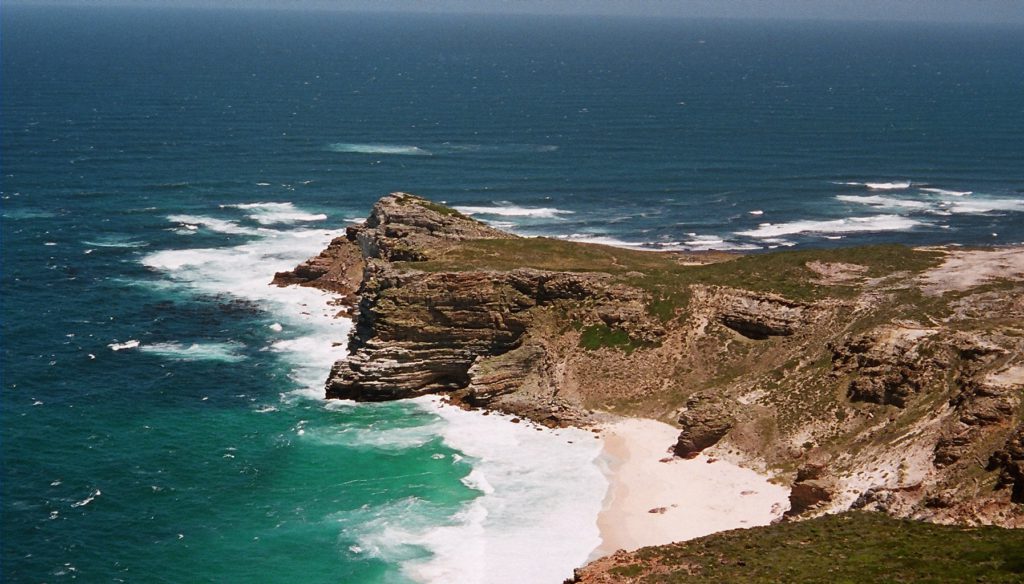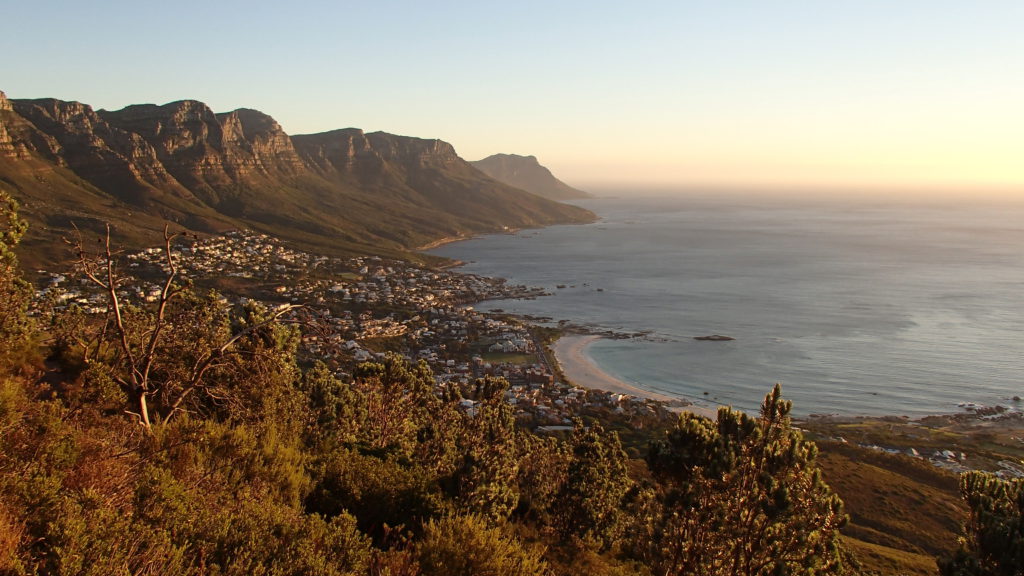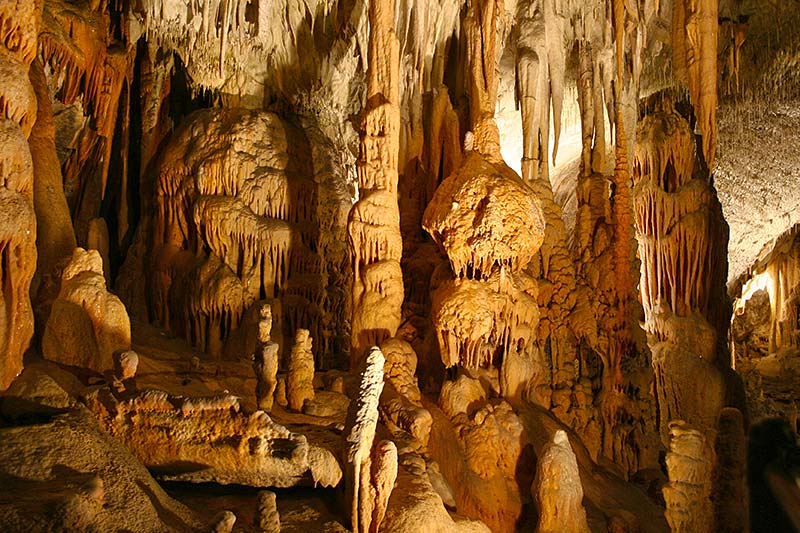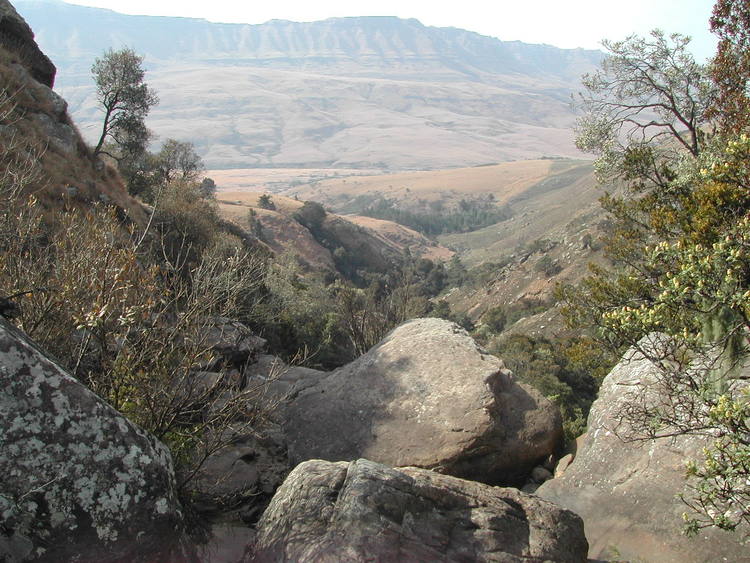Cape of Good Hope

The deceptively beautiful surroundings of the Cape of Good Hope. Source.
For centuries, before the construction of the Suez Canal linking the Red Sea and the Mediterranean (and by extension, East and West), the only way for European ships to reach Asia (and vice versa) was to sail around the tumultuous Cape of Good Hope. Originally named the Cape of Storms for its devastating conditions, sailors braved treacherous weather, towering waves, winds of over 30 knots, and unpredictable currents, all born of a violent clash between the Atlantic and Indian Oceans.
Today, the Cape is recognized as the southwestern-most point of the African continent, and draws tourists with its fierce, rugged beauty. On a clear day, visitors can see for kilometers in every direction, across the vast, unforgiving expanses of the violent Atlantic Ocean.
Apartheid Museum
Founded in 2001, the Apartheid Museum is a stunning reminder of a terrible time in South Africa. Its haunting exhibits hammer home the rank injustice of a segregated nation: walk through artfully-arranged rooms with the personal stories and everyday trinkets of those who lived through this time, stare at the faces of a divided people, and look up to see a series of limp, braided rope nooses that hang from the ceiling.
Words cannot fully describe this racist injustice, nor truly express the sorrow, pain, and suffering of this dark chapter of South African history. But to ignore history is to repeat it, and we disregard it at our own peril.
Swartberg pass
As you drive on the twisting road that winds itself up the jagged switchbacks of the Swartberg Pass, marvel at the unforgiving mountains all around you. Choose between views of the striated canyon walls, layers of red, tan, and black rock making for a dizzying rainbow kaleidoscope, or panoramas of the nearby mountains and valleys.
The scale of the achievement is even more obvious when you consider that the road was built 120 years ago by engineer Thomas Bain and a team of 200 convicts. Still, the Swartberg Pass is not to be taken lightly; visitors must use a rugged vehicle with 4×4 drive, and take heed of local conditions. Note that the road is made of gravel, and often closed when it’s raining.
Cango Caves
One of South Africa’s best-known attractions, the Cango Caves are a vast, expansive underground system located within the Swartberg Range. The physically fit (and daring) can take an adventure tour, a daunting excursion which involves climbing up ladders, scrambling across platforms, and even squeezing through a narrow rock shaft. Alternately, visitors can try the heritage tour, a slower walk through some of the Cango Caves’ best-known chambers, such as the regal, imposing Botha’s Hall or Van Zyl’s Room, 100 meters below the surface and filled with stalactites.
As the first natural area to be protected under South African law, the Cango Caves enjoy a distinguished history as a tourist attraction–though there is archaeological evidence that suggests that early humans were sheltering and living within these subterranean passageways.
Garden Route

A scene on the Garden Route. Source.
Winding its way through some of South Africa’s most diverse, breathtaking landscapes, the Garden Route stretches from Cape Town through scenic Mossel Bay and finally to Port Elizabeth. Alternating between soothing, sandy beaches surrounded by the deep azure waters of the Atlantic and Indian Oceans, majestic peaks rising thousands of meters above the surrounding plain, and fierce rivers lined with ancient, primeval forest, the Garden Route is the raw, natural heart of South Africa.
Maloti Drakensburg
A rare, incredibly beautiful park selected as a UNESCO World Heritage Site, Maloti Drakensberg actually comprises two areas: the uKhahlamba Drakensberg National Park in South Africa and the Sehlathebe National Park in Lesotho, the kingdom located within South Africa’s borders.
Home to an array of geological features, such as basalt buttresses, sandstone arches, and rock pillars, Maloti Drakensberg’s confines are home to a bewildering range of species, from the endangered Cape vulture to troops of baboons. Within the park’s wide expanses are a number of rock paintings and cave art done by the San and Bantu peoples.
Whatever you choose, know that South Africa is full of adventure, culture, and history, an underrated destination with a rich heritage. Enjoy your time in the Rainbow Nation!










